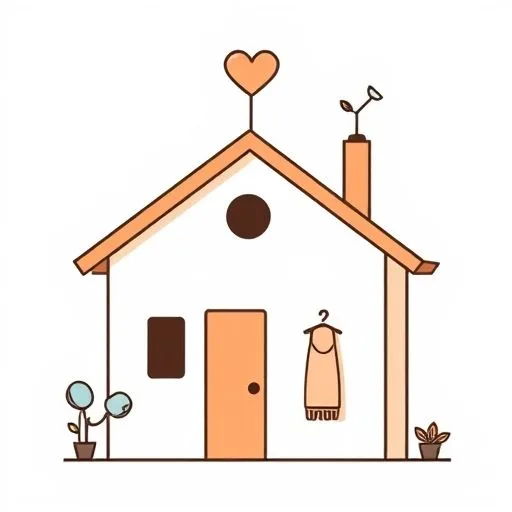
That moment when she pauses in the hallway, halfway through the nightly routine—dish towel still in hand, listening to the quiet that’s settled over the house. We’ve all seen it, haven’t we? That quiet strength she’s carrying when she’s gathering every emotion swirling around the dinner table like satellites. It’s how we’ve learned to build our own family weather system—reading the pressure changes in someone’s hesitant smile, tracking the way our child’s shoelaces get tied more slowly when the clouds are gathering. We’ve both become amateur meteorologists of the heart, watching the signals we all broadcast without even realizing.
That Little Twitch Before the Storm

You’ve seen it, haven’t you? The way your ten-year-old suddenly starts humming the same song three times, just a little louder each time when the homework’s about to overwhelm them. Or the slight pause before she answers, ‘No, I’m fine’ when you’re halfway through the bedtime routine—those three words that feel like a weather report predicting a thunderstorm.
We used to miss these moments, rushing through them like we could outrun the emotions. But the more we’ve watched each other—the way she’ll catch the rim of the coffee cup just so, or how I’ll start tapping the steering wheel rhythm—we’ve learned these are our shared language. Not signs of weakness, but signals. ‘Hey, the wind’s picking up here.’
The Calm Before the Calm: How We’re Learning to Be First Responders

Remember when we thought we needed to be emotion superheroes? Fixing feelings before they were even fully felt? We’ve learned something different. That quiet strength we see in her—that’s not about holding back the storm. It’s about knowing when to open the windows.
We’re building a new kind of early warning system—not just catching the signs, but understanding what they’re telling us. Like when she sits down with our daughter’s half-finished Lego project—not saying, ‘Let’s clean this,’ but asking, ‘What’s this part? Tell me about it.’ That’s not avoidance. It’s emotional intelligence disguised as a Lego conversation.
We’re learning that the way we talk to each other—and to our kids—becomes the scaffolding for their emotional radar.
And it’s all happening in the pauses between the big moments.
What Our Children Watch When We’re Not Looking

Here’s what we’ve realized: Our kids are chronicling our emotional weather patterns. They see how we handle the storm when the milk spills—how we breathe through the urge to clean it up. They watch how she navigates difficult conversations with her parents, modeling calm.
We’ve all had that moment, haven’t we? When you see your child’s little face, that quiet moment when they’re working through something huge—and they’re doing it exactly how you do it. That’s the real magic—the way we model healthy emotional regulation. Not because we’re perfect at it, but because we’re visibly trying.
Like when we call a family timeout—not because we have all the answers, but because we’re showing them we can still think clearly when the storm comes. We’re building a blueprint for the next generation, written in the way we talk when we’re frustrated, and respond when we’re tired.
We’re Not the Fixers—We’re the Guideposts

It’s taken us all this time to understand something important: Seeking help isn’t the failure—it’s the first sign of success. We’ve watched our friends navigate that. We’ve seen them reach out to counselors, teachers, and to each other—and that courage has become part of our family’s emotional vocabulary.
The guideposts are there, and our kids are naturally looking for them in the way we respond, react, and recharge. We’re just not the only ones holding them. The real power is showing them how we’re constantly learning and adapting to our emotional skies. It’s like when we’re in the kitchen and the dish is off, we don’t just guess, right? We’re just changing, we’re adjusting, and not afraid to let them see us trying. So, like when we go, ‘We’re all feeling a little stormy today—what do we need to do?’
The real power is in letting our kids watch us reflect, and maybe even help us navigate. This is how we’ve all started building our own family’s emotional radar. We’re not the fixers, but we’re definitely the guideposts. We’re not just measuring the weather, but we’re learning to coexist in it, together. The quiet strength we’re growing into? That’s it—walking in it, showing it, and sharing it, even if it’s just through the tiniest of shared moments.
Source: Vibranium Labs Raises $4.6M To Fix Vibe Coding Failures With AI Agents After Engineers Admit These Apps ‘Are Definitely Going To Break’, Yahoo Finance, 2025-09-23
